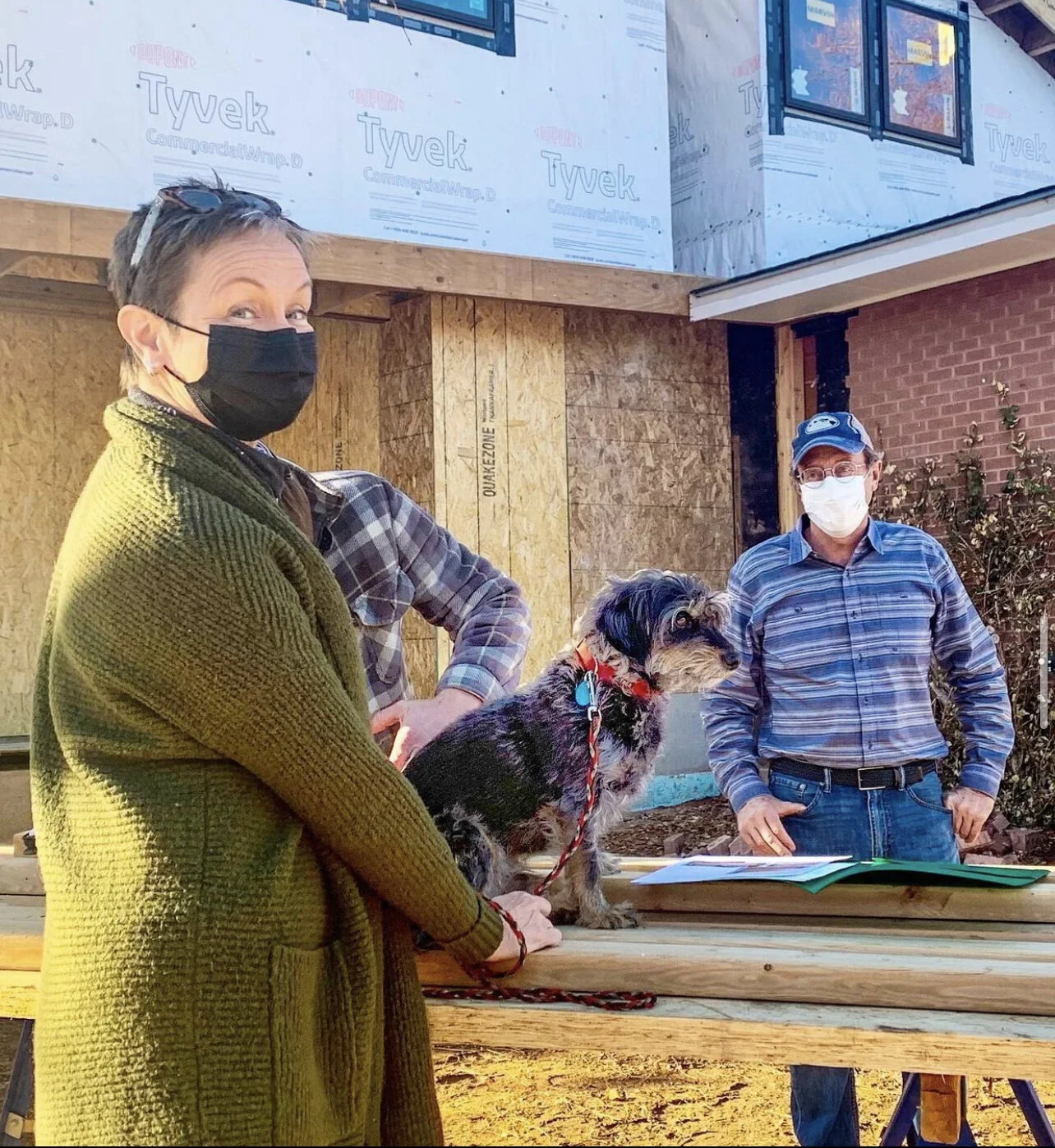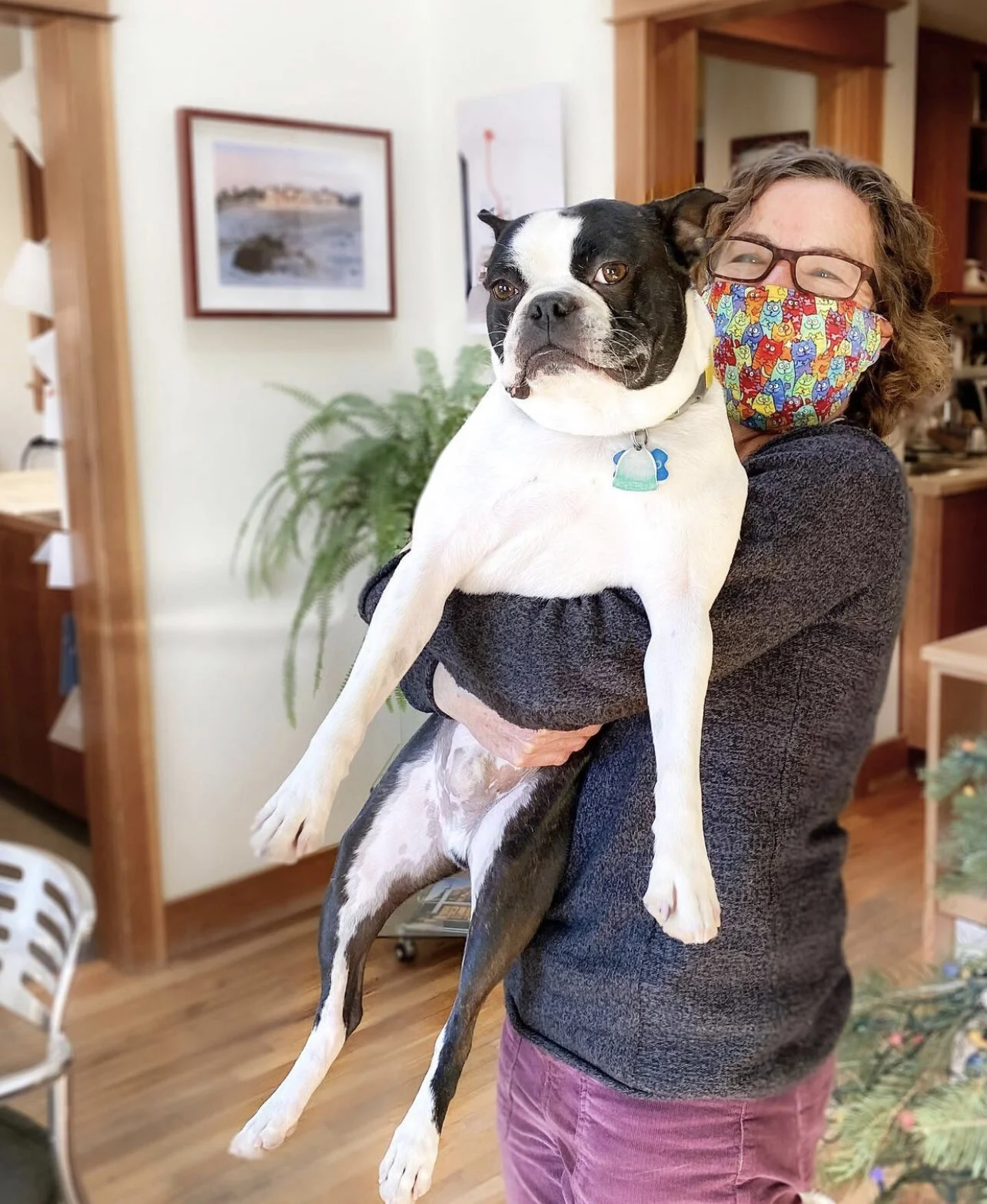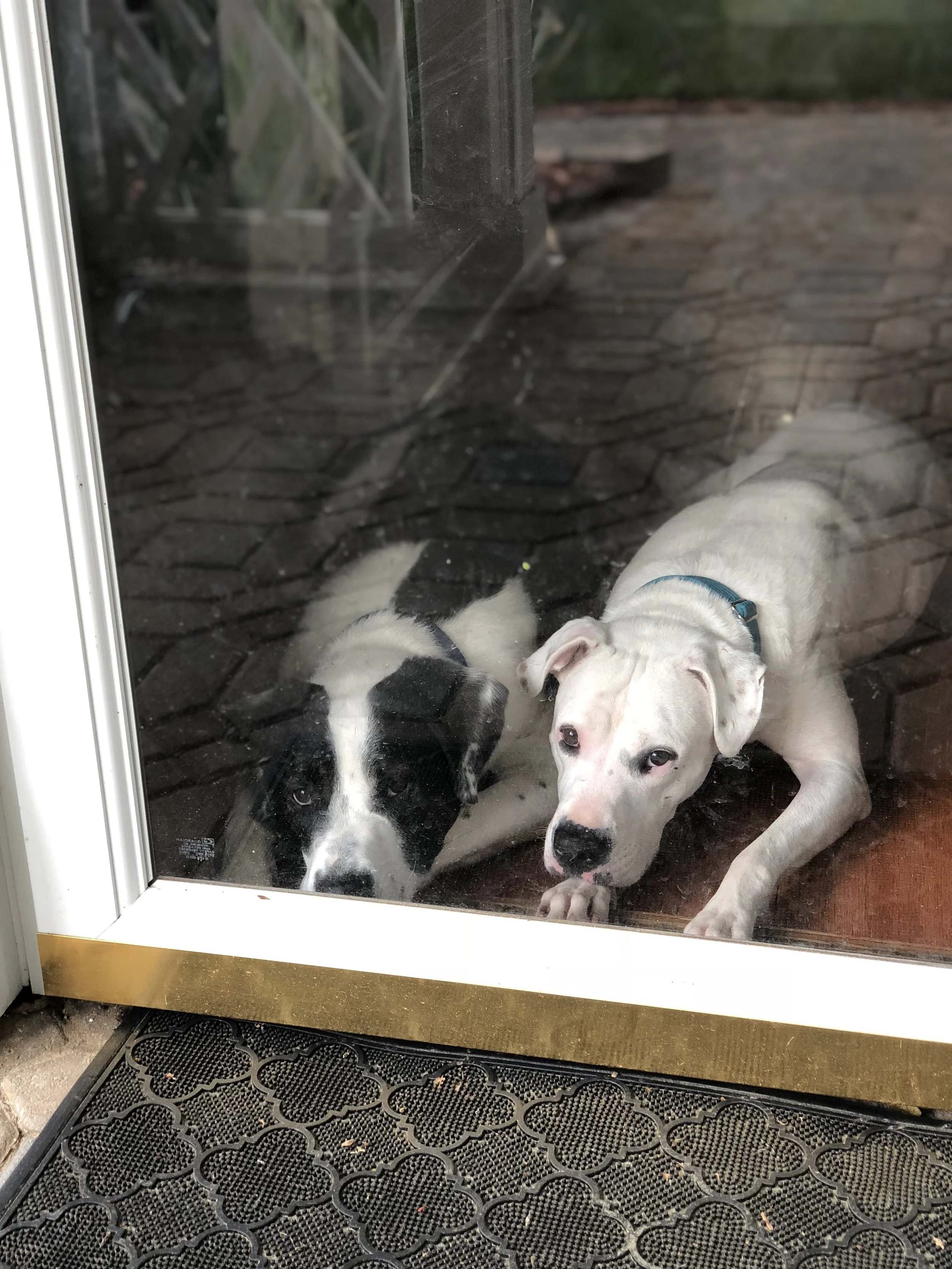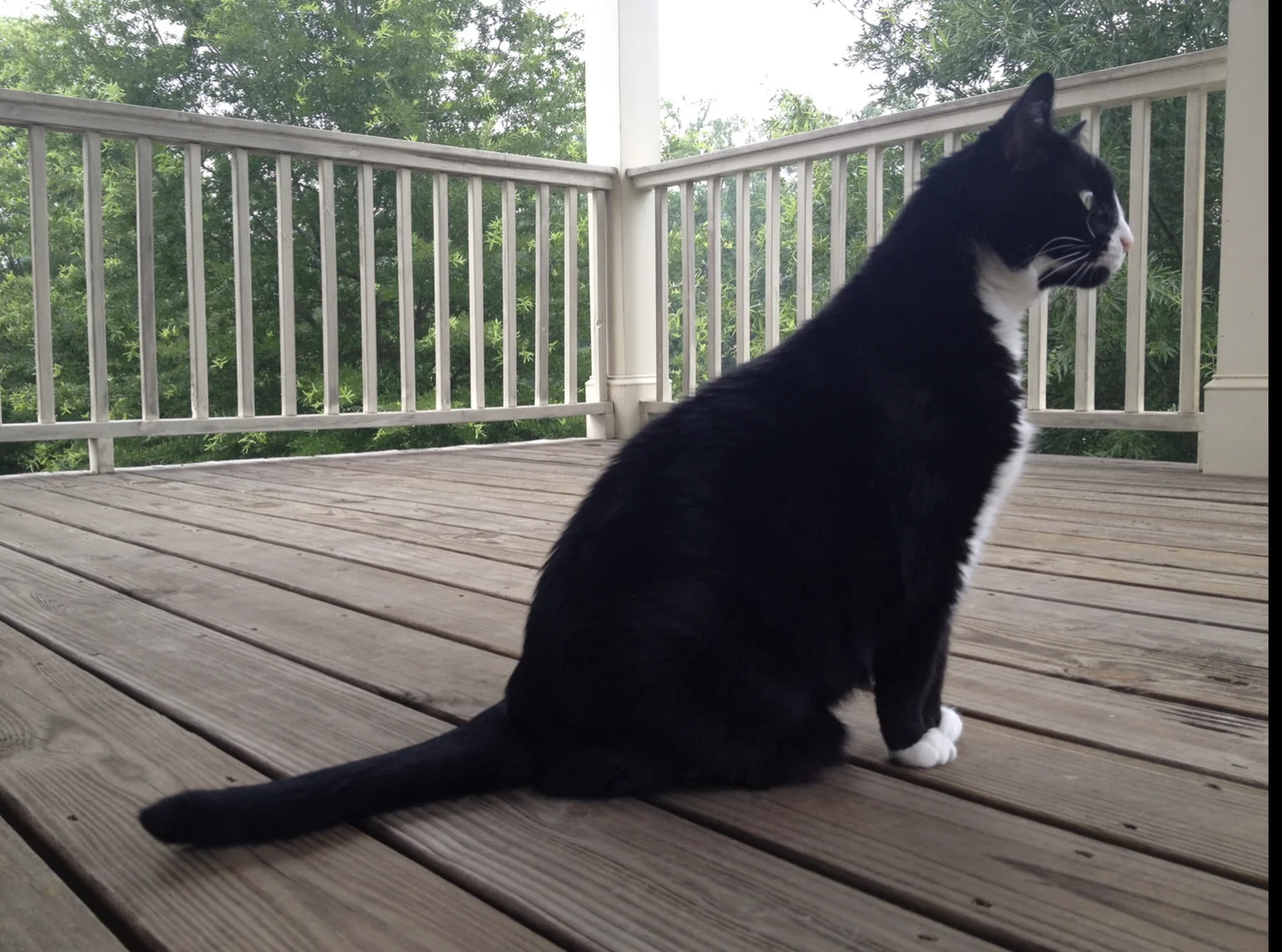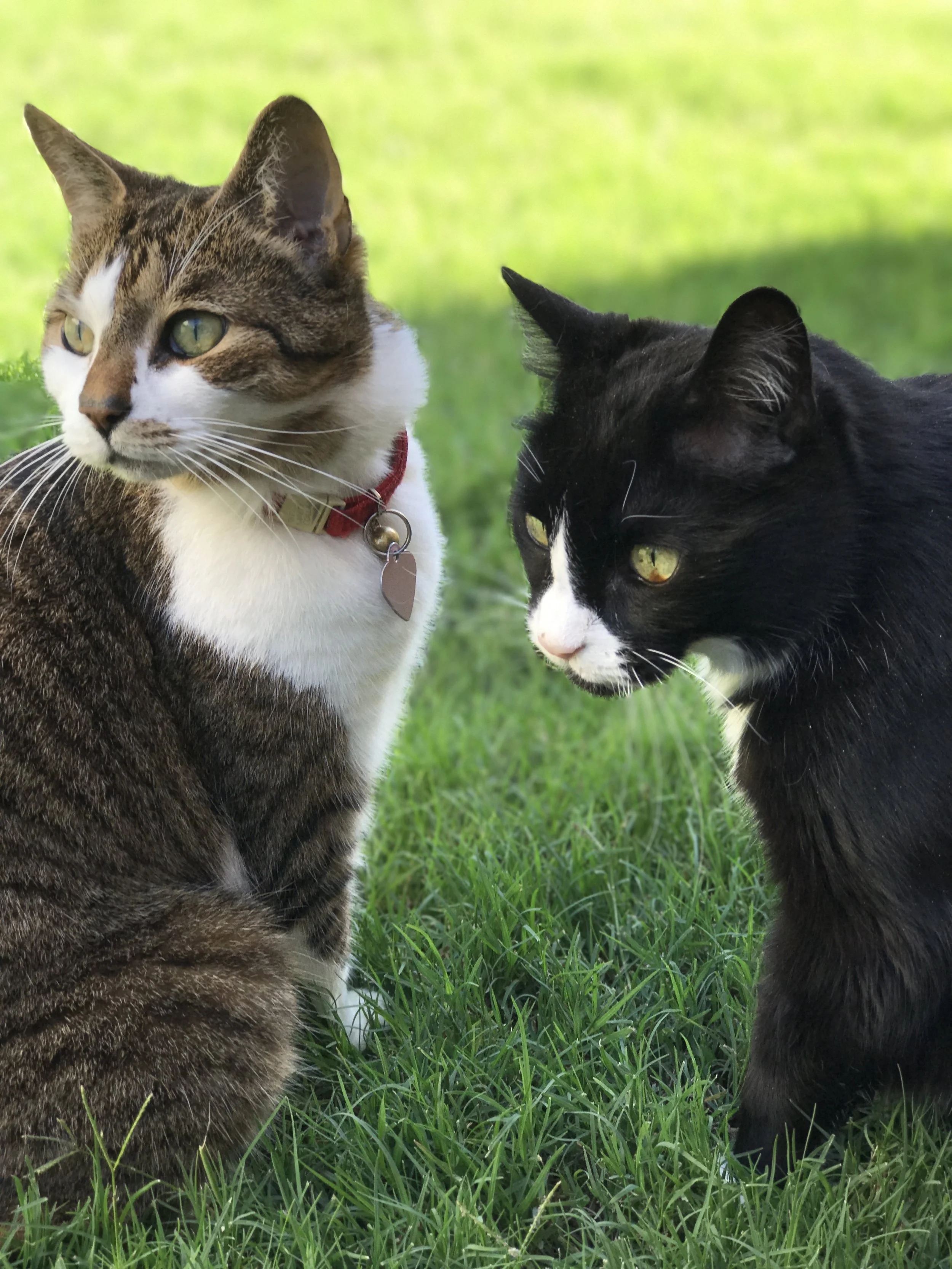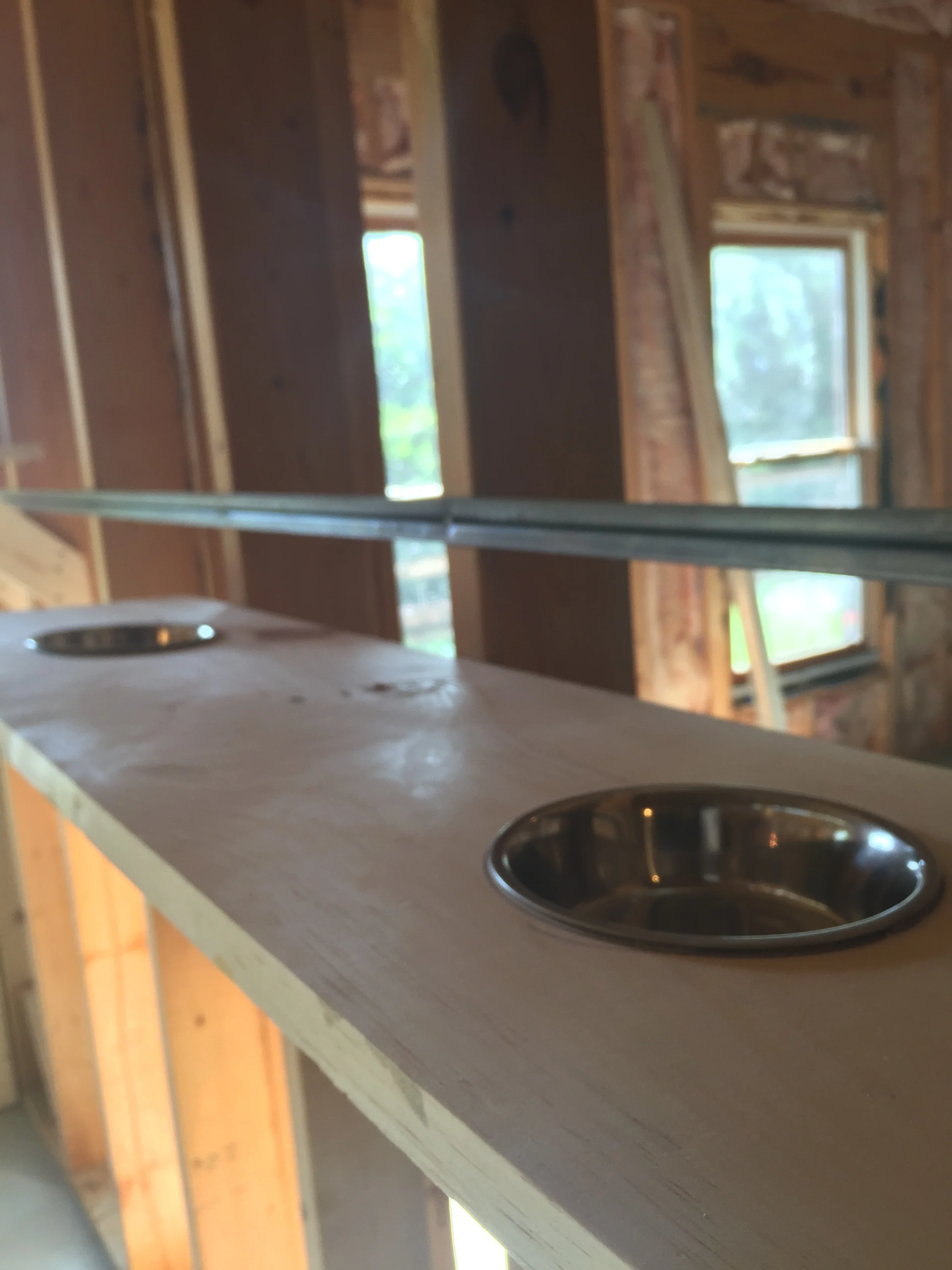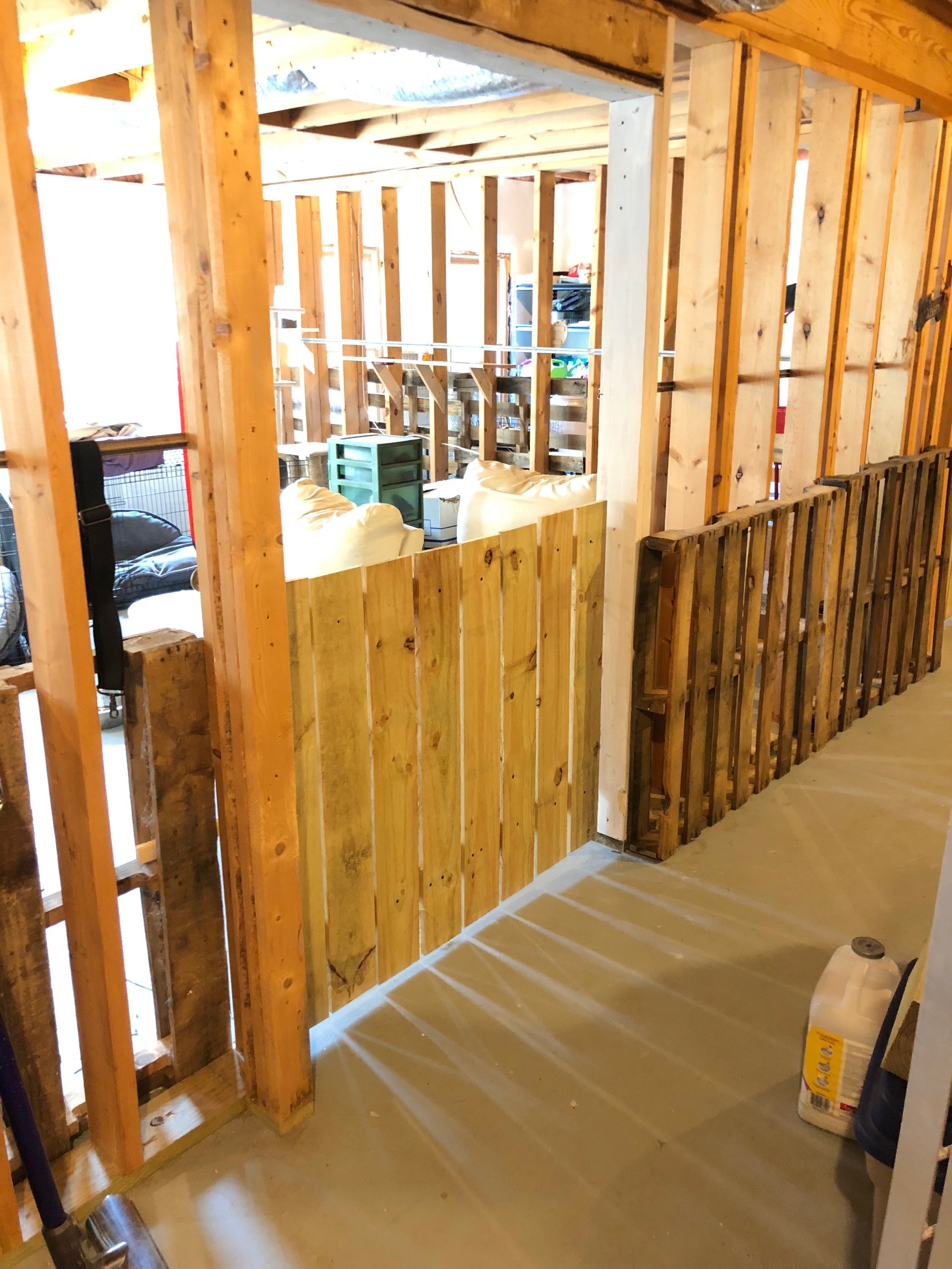Cottonwood Custom Builders is a prominent general contractor based in Boulder, Colorado. They specialize in “green” custom homebuilding and remodeling, and pride themselves on the ability to bring any vision to life.
We interviewed Hannah Finch Phillips (Marketing Director) and Kimberly Neill (Project Manager & Estimator), and combined their comments below.
Marketing Director Hannah.
Photo copyright: Cottonwood Custom Builders.
Project Manager/Estimator Kimberly. Photo copyright: Cottonwood Custom Builders.
Does your team have pets?
Founder Jeff with his dog, Karma. Photo copyright: Cottonwood Custom Builders.
Do we ever! We’re a pet loving community.
Most days at the office, we have our friendly and very enthusiastic greeters: Beatrix (cattle dog mix) and Apollo (Boston terrier). Both are rescue dogs that belong to our Marketing Director, Hannah. When we are really lucky, our founder Jeff Hindman brings Karma the Portuguese water dog to the office, too! Karma doesn’t visit as often, as both of her humans work at pet-friendly offices, so we have to share her!
Outside of the office, our team members have many more dogs, cats, and other animal companions!
Have your experiences with pets affected the way you think about functionality in home design or construction?
Certainly! As pet owners, we know how central they are to families and how much joy we find in pampering them. As pets age, they need different considerations. Our goal is to build homes that pets are safe and happy in, from youth to old age.
We love getting to build “wish list” amenities for pets in our homes, such as dedicated washing stations and built-in litter boxes! It keeps the home clean and beautiful, and makes it easier to care for our furry (or scaly) friends.
What makes your company a pet-friendly builder?
Dog wash station in a mudroom. Photo copyright: Cottonwood Custom Builders.
As a fully custom builder and remodeler, our homes are never “one size fits all.” That doesn’t just apply to the humans! On each project, we work with the homeowners to make sure that everyone is happy with the final result, including their pets.
Over the years, we’ve enjoyed coming up with clever solutions to make the humans’ and pets’ lives better!
Have you worked with clients whose pets were a major consideration in the project?
We’re working on a fun one now! Our client has a dog and two cats. Since the dog and cats don’t get along, and the owners don’t want the cat’s litter box in their bedroom (can’t blame them there!), we needed to create a way for the cats to travel from the second floor bedroom to the first floor mudroom. The solution? A secret cat tunnel between the two rooms. We’re currently working with the homeowners and their cats to determine the best finishing materials to allow the cats to feel comfortable and travel easily.
How can builders help their clients live more comfortably with pets? What custom home options facilitate pet-keeping tasks?
There are so many options, it’s hard to know where to start. We like to think about ways to make the humans’ lives easier, such as pet washing stations, automatic pet doors, and ventilation systems to reduce litter box odors. For the pets, we think of ways to add more delight to their lives. Cozy window seats, heated tile floors, and built-in, raised eating dishes seem to be some pet favorites!
Pets need mental stimulation and exercise; otherwise their boredom can lead to destructive behavior. Do you have suggestions for home options that can help keep dogs or cats busy?
By creating things like cat tunnels and automatic pet doors, we enable our pets more space to move around and explore. Since they spend so much of their lives in our homes, it’s essential that they have room to roam & play! Even better, when pets have a designated area that is built to withstand their rougher play (claws, mud, etc), it gives them an area to “blow off steam.”
Speaking of destructive behavior (e.g., dogs chewing furniture or cats pushing figurines off shelves), do you have advice for clients whose pets are home alone all day?
Creating a designated space that the pets stay in when left alone is great for pets and humans. Pets enjoy having a routine and places where they feel safe. By creating a designated area that meets their needs (access to the outdoors or a litter box, sunshine, food, etc), it sets the pet up for success (and protects those family heirlooms).
Kitchen with a honed concrete, radiant heated floor. Photo copyright: Cottonwood Custom Builders.
What do you see as the major considerations for building a pet-friendly home?
The major considerations center around creating what YOUR pet needs to thrive, while balancing that with your design goals for the home. Any style home, from traditional to modern, can be pet-friendly with creative thinking! And of course, throughout the whole process it’s important to choose eco-friendly building materials that promote healthy indoor air quality and protect the environment.
What type of floors do you recommend for households with large dogs?
For durability and modern style, we suggest honed concrete. After finishing, it is quite gorgeous and if you pair it with radiant heat in the flooring, it's a pet's dream! Luxury vinyl tile is another durable option. We feel that the honed concrete is a greener option, although both products have their shortcomings.
What are your favorite pet-friendly luxuries?
Jeff’s cat, Mikki, enjoying a radiant heated floor.
Photo copyright: Cottonwood Custom Builders.
If we could give a gift to every dog owner, it would be a washing station. It’s less stressful for the dogs and saves your back from having to lean over a tub! And for cat owners, a heated tile floor. Cats love to lounge on the warm, relaxing surface.
Many people think of "pet-friendly" as a design consideration that only applies to rich or eccentric clients. What do you think? Are pet amenities out of reach for the average homeowner?
Not at all! Of course, there’s a range. Not everyone has the time, energy, or resources to do custom framing for creating cat tunnels. But there are many simpler things that are achievable. We love looking online for clever DIY ideas. If you’re just getting started, it’s a great place to start!
Many pets live in apartments, and landlords are becoming increasingly aware of the benefits of allowing pets (larger prospective tenant pool, happier/more loyal tenants, etc.). What tips would you offer to property managers who want to accommodate pets? Are there options that benefit families with pets as well as children?
We are huge believers in the value of time outside. When communities create shared resources, such as off-leash areas for dogs, it doesn’t just benefit the pets. It also benefits the humans and often helps them meet more of their neighbors. A true win-win! Patio space is also great, but it’s essential that the railings and decking are safe for children and pets.
Do you have any specific examples of pet-related challenges that you would like to share?
It can be hard to predict how a pet will react to a new environment. Sometimes, you might build something you’re sure they’ll love and then discover that something about it makes them uneasy. With that in mind, we encourage people to beta test ideas before fully building them out.
We had a great “learning moment” on this a few years ago. We crafted a cat tunnel that led to a custom litter box enclosure. It was designed so that when the cat was visiting the litter box, a ventilation fan would automatically turn on. Turns out, the cat was terrified of the fan. In the end, we disconnected the fan and the cat thoroughly enjoys the luxury litter box in peace.
Animals are unique creatures; listen to them as you’re designing their spaces.
Do you think that pet amenities will ever be offered as standard "options" for homebuyers?
Especially with how people are thinking about home differently during the pandemic, we say YES! Buyers want their homes to be an oasis from the outside world. Anything that makes life more comfortable and easier is a huge value-add!
A few pandemic-era photos of the Cottonwood team and their furry co-workers. All photos property of Cottonwood Custom Builders.







